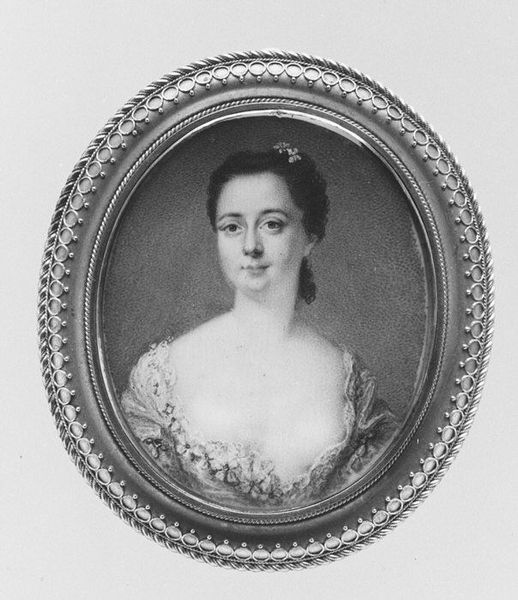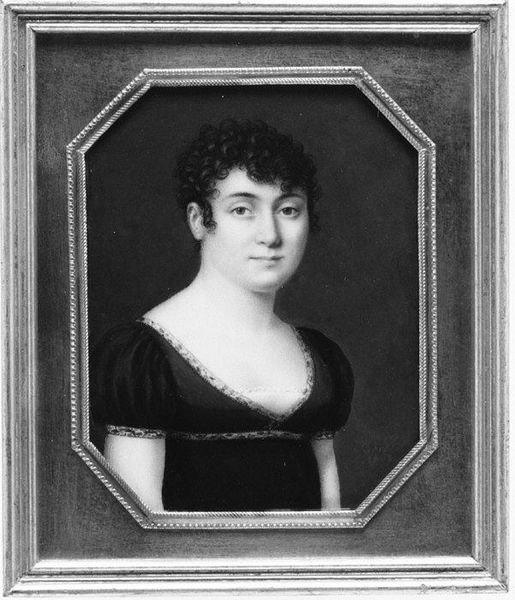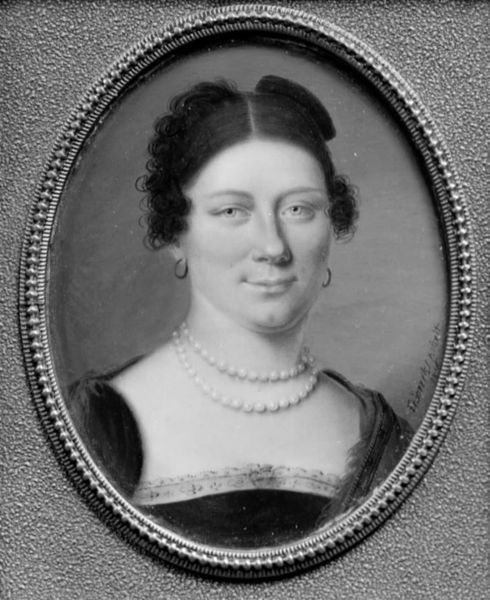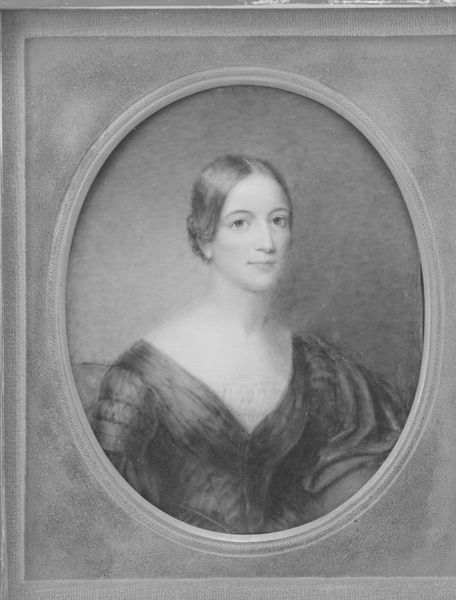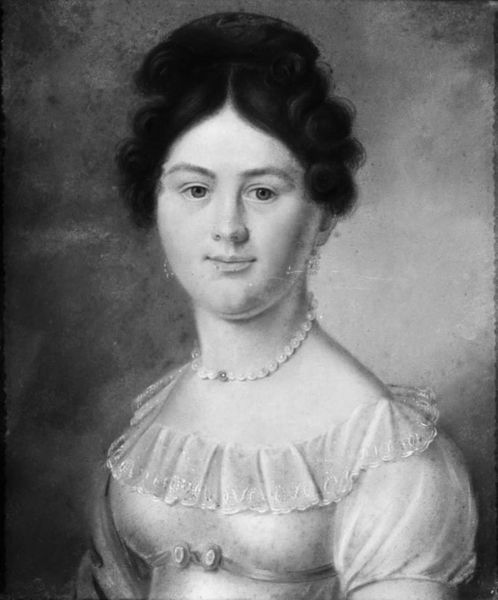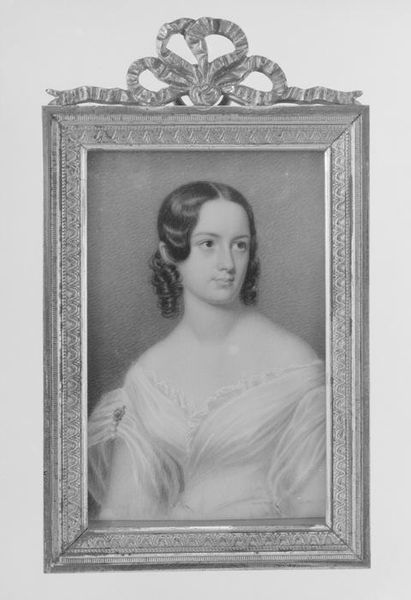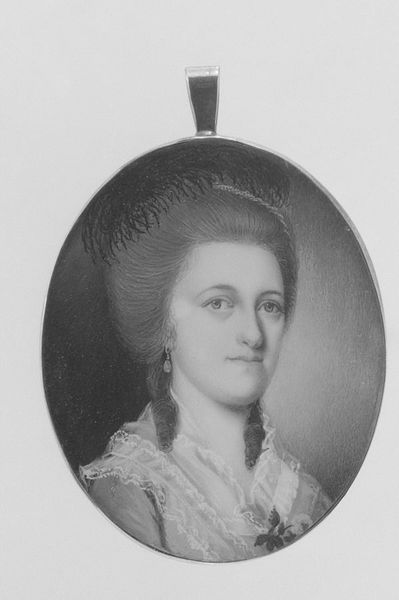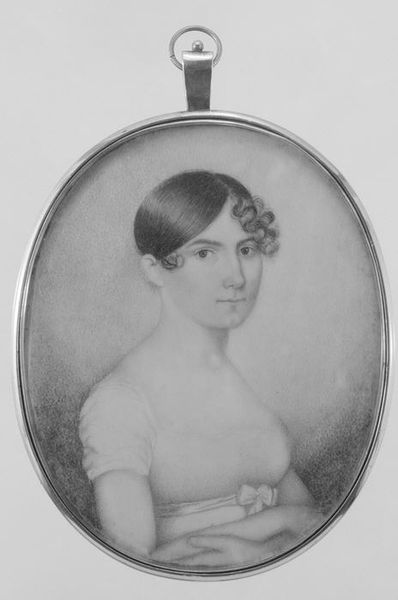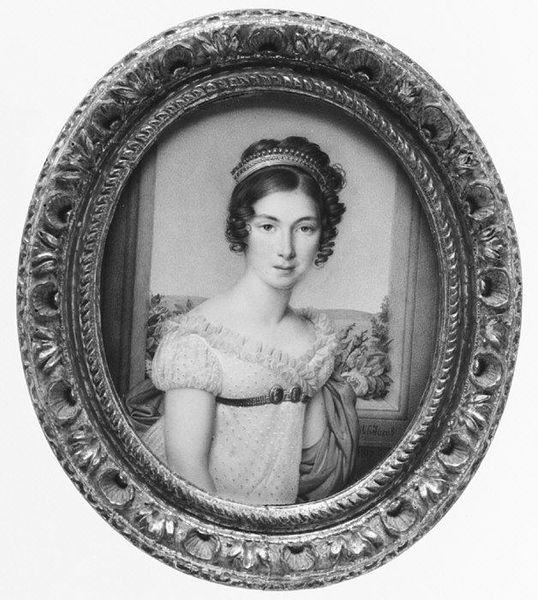
drawing, paper
#
portrait
#
drawing
#
black and white photography
#
paper
#
romanticism
#
monochrome photography
#
miniature
Dimensions: Oval, 4 x 3 1/8 in. (104 x 82 mm)
Copyright: Public Domain
Curator: It’s incredibly intimate, isn’t it? There’s a delicate stillness to the work; it feels like she’s holding her breath. Editor: Today, we're considering "Portrait of a Woman," a drawing by Joseph Bordes, completed around 1812. It’s currently held in the collection of the Metropolitan Museum of Art. And you're right—the immediate feeling is one of intense composure. Curator: That makes sense. With Romanticism's interest in intense emotional states and self-expression, how does the portrait fit in with these concepts in early 19th-century portraiture, particularly when considering gender and the social constraints placed on women during that period? Editor: I see it as a contained eruption, a study of the inner self barely constrained by expectation. Her gaze is direct, almost challenging. Bordes really captured something simmering beneath the surface. You know, sometimes I feel like I see my own secrets reflected back at me when I look at portraits like this. It’s like a coded language understood across centuries. Curator: Right, and it’s interesting to unpack those codes, right? Think of this portrait as an artifact. What does this tell us about the power dynamics of the era, and how were women positioned within these societal frameworks? Does the miniature format also say something about women’s status? Editor: Perhaps the size amplified that feeling of fragility, preciousness. And the delicate lines add to that sense of hidden vulnerability, a tiny universe brimming with complex emotions. Curator: Let’s also not overlook the way portraits like this were instruments of social navigation, playing a vital role in matters like courtship and consolidating family legacies. The presentation of this woman is calculated, isn’t it? What message about lineage and aspiration did it convey to its intended audience? Editor: Absolutely. It reminds us that behind every face, every brushstroke, lies a story steeped in social and personal narratives, a reminder of our shared humanity, I guess, echoing through time. It all comes down to that human connection, doesn’t it? Curator: Precisely. When we see representations of others, particularly from periods so removed from our own, it forces us to really interrogate the way identities have been constructed and continue to evolve. It reminds us that "identity" is not some fixed attribute, but is instead the culmination of individual lived experiences and historical factors.
Comments
No comments
Be the first to comment and join the conversation on the ultimate creative platform.
